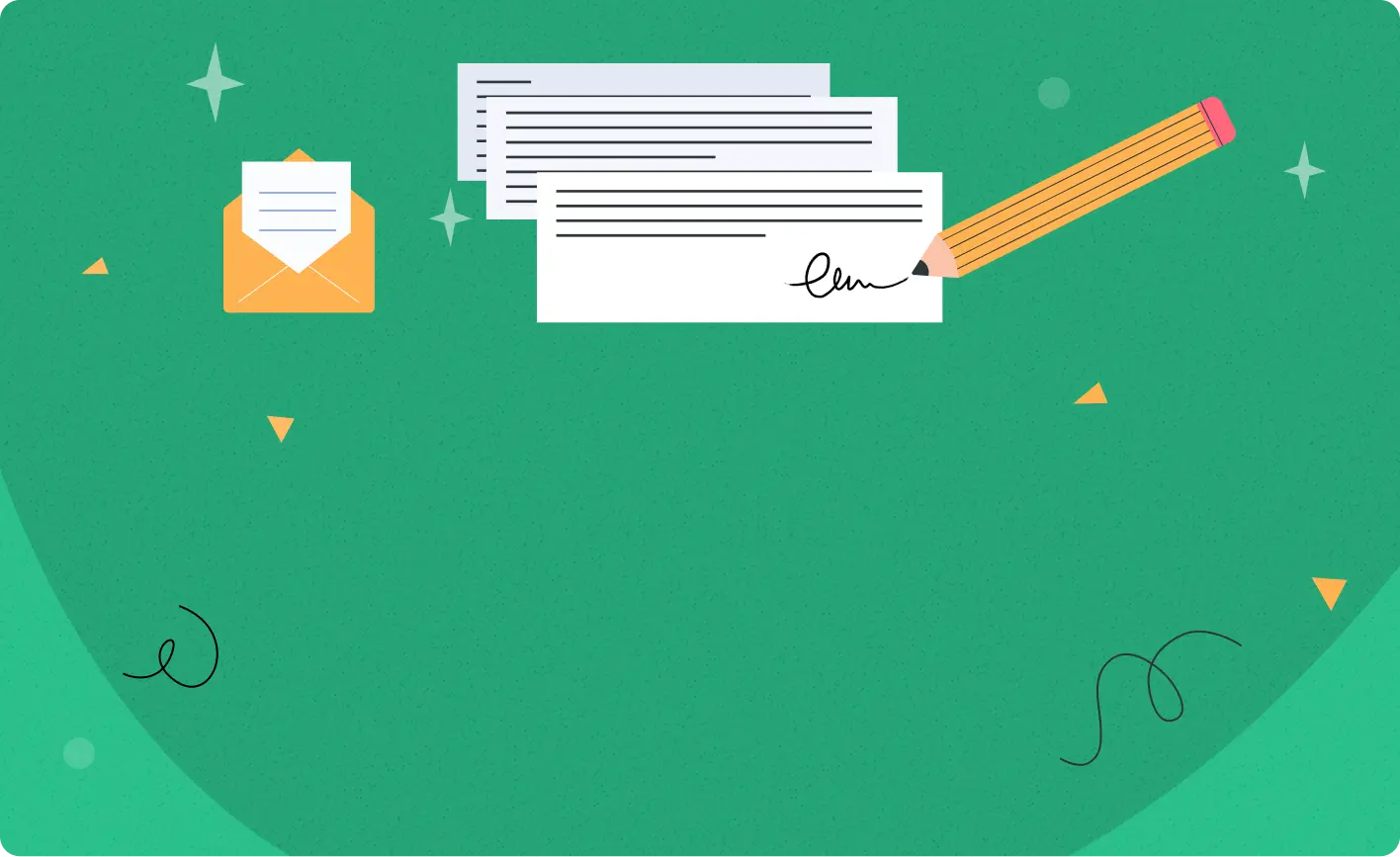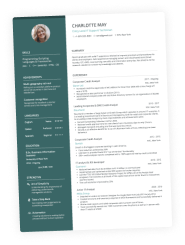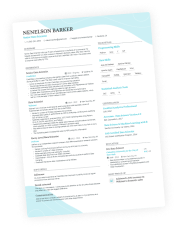You’ve crafted your cover letter, tailored it to the role, and you're ready to hit send. But before you do, there’s one final detail many job seekers overlook: the enclosure line.
It may seem small, even old-fashioned, but it’s not. Including enclosures shows you’ve submitted a complete application and understand the expectations of professional correspondence. It’s a simple way to communicate clarity, structure, and attention to detail—qualities every employer wants in a candidate.
Think of the enclosure line as a quiet nudge that says, “I’ve included everything you asked for—right here.”
In this guide, we’ll walk you through when to use enclosures, how to format them for both printed and email applications, and the common slip-ups to avoid along the way.
Key takeaways
- Enclosure is any document sent with your cover letter: Resume, certifications, or other supporting materials.
- Use enclosures when requested or to strengthen your application: Double-checking the job posting is essential.
- Skip the enclosure line when it’s redundant: Like in online portals, short emails, or when using a combined PDF.
- Match the format to the medium: Use “Enclosure” for print, “Attached” for email, and always below your signature.
- List documents on separate lines and name them clearly: Avoid vague terms like “files” or “docs.”
- Professional formatting shows attention to detail: Consistency in spacing, font, and tone reinforces your credibility.
Need a hand getting the details right? Enhancv’s Cover Letter Builder makes it easy to format everything—from your opening line to your enclosures.
Drop your resume here or choose a file.
PDF & DOCX only. Max 2MB file size.
What is a cover letter enclosure and when should you use one?
A cover letter enclosure is any supplemental document you include with your letter, such as your resume, a reference list, portfolio, or transcripts.
You might recognize the word “enclosure” from more traditional business correspondence. Historically, it appeared in printed letters to signal that other documents were physically enclosed in the envelope. The practice has changed with the switch to online applications. But the goal is the same: to show your application includes more than just the letter.
Using an enclosure line today shows you understand formal communication and are paying attention to what the employer has asked for.
Enclosures are useful in two common situations:
When the job posting asks for specific documents, like references, certifications, or a portfolio.
When you have additional materials that could strengthen your application, even if they aren’t required.
Typical enclosures are:
- Resumes
- Reference lists
- Work samples or portfolios
- Certifications or licenses
- Academic transcripts
When not to use an enclosure line
While enclosures are useful for some situations, there are times when you don’t need to provide them.
Here’s when it’s okay to skip the enclosure lines:
- Online application portals: If you’re submitting your resume, cover letter, and other documents through individual upload fields, there’s no need to restate them in your letter. The system already makes it clear what you've provided.
- Email applications with brief messages: When your email acts as a short intro and not a formal cover letter, just mentioning your attachments in the body (“Attached are my resume and references”) is enough.
- Combined PDF documents: If your resume, cover letter, and other materials are all in one file, the enclosure line becomes optional. It won’t hurt to have it, but your documents are already bundled.
In short, if the format or platform already makes your attachments obvious, you don’t need an enclosure line. But when in doubt, adding one is a safe and professional move.
Let’s look at how to format this section correctly so it’s clear and gets the recruiter genuinely interested.
How to format enclosures for printed and email cover letters
Formatting your enclosure line correctly guarantees every supporting document gets seen. While the placement is generally the same, the wording and format vary slightly depending on whether you're sending a printed letter or applying by email.
Where to place the enclosure line
Always list your enclosures at the very bottom of your letter, beneath your signature. This lets readers know additional documents are attached.
Formatting for printed letters
When sending a printed or mailed letter, write the word "Enclosure" (for one document) or "Enclosures" (for multiple documents) right below your signature. Then, list each document on a separate line.
Example
Sincerely,
Jordan Lee
Enclosures:
Resume
Portfolio
Certification
Formatting email cover letters
In email applications, use “Attached” instead. You can reference your documents either in the body of the message or just below your sign-off. Keep it clean and easy to read.
Example
Sincerely,
Jordan Lee
Attached: Resume, Writing Samples
Advanced formatting tips and examples
Once you’ve nailed the basics, here are a few extra formatting options that can add clarity to your enclosure or attachment section.
1. For printed letters: include titles or descriptions if needed
If you’re submitting materials with specific relevance (like a project portfolio or writing sample), adding brief identifiers can help the reader understand exactly what they’re receiving.
Example
Enclosures:
Resume – Jane Doe
Project Portfolio – UX Redesign Case Study
Certification – PMP, 2023
2. Add file names for digital clarity
When emailing documents, it can be helpful to refer to the actual file names so the recruiter can quickly identify them.
Example
Sincerely,
Jordan Lee
Attached: JordanLee_Resume2026.pdf, JordanLee_References.pdf
3. Use proper spacing and alignment
Avoid clutter. Leave a line of space between your sign-offand your enclosure list, and don’t indent the items—flush left is best. Stick to a professional font and clean template.
4. Make your format consistent with your overall application
If your resume and cover letter follow a specific design, your enclosure section should match.
Even with the right format, small details can trip you up. Here’s what to look out for to keep your enclosures polished and professional.
Common mistakes to avoid
Even if you’ve mastered how to write a cover letter, your application can still fall short if you mishandle the enclosure section.
Avoid these mistakes:
- Leaving out the enclosure line: Mentioning your resume or portfolio in the body isn’t enough. Hiring managers often skim, and without a clear visual cue at the bottom, your materials might go unnoticed.
- Only referencing documents in the body: Even if you’ve already said, “I’ve attached my resume,” you should still add a clear enclosure or attachment line at the end of the message. Recruiters often download or forward attachments separately, so the enclosure line helps ensure nothing gets lost or overlooked.
- Cramming everything into one line: In printed letters, listing documents like “Resume, References, Transcript” all in one line can look rushed. Use a separate line for each item to keep your formatting clean and easy to scan. This does not apply to emails. Listing attachments in one line is acceptable there.
- Using vague or incorrect terms: Avoid general phrases like “documents” or “files.” Instead, be specific and professional. Use “Resume,” “Portfolio,” or “Reference List,” and make sure to choose “Enclosure” for printed letters or “Attached” for emails.
- Mixing up formats or forgetting attachments: Using the wrong term for the format can make your application seem careless. For example, don’t write “Attached” in a printed letter. Also, always double-check that your documents are actually included—forgetting to attach a file happens more often than you might think.
Conclusion
Before you send your application, double-check your enclosure or attachment section. Make sure it's clearly labeled and properly formatted.
It only takes a moment to write your enclosures, but doing it right could help set you apart from other candidates.
Want to get it right without the stress? Build your cover letter—enclosures and all—with Enhancv’s Cover Letter Generator.




